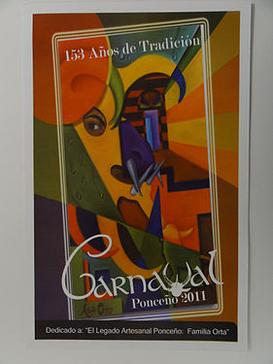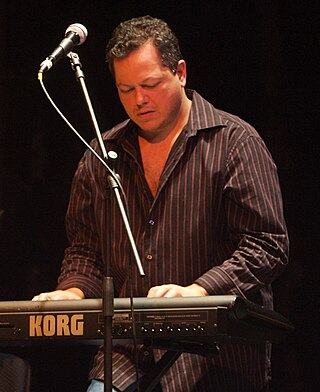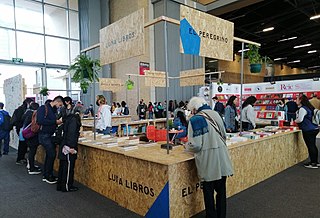
Santiago de Cali, or Cali, is the capital of the Valle del Cauca department, and the most populous city in southwest Colombia, with 2,280,522 residents estimate by DANE in 2023. The city spans 560.3 km2 (216.3 sq mi) with 120.9 km2 (46.7 sq mi) of urban area, making Cali the second-largest city in the country by area and the third most populous after Bogotá and Medellín. As the only major Colombian city with access to the Pacific Coast, Cali is the main urban and economic center in the south of the country, and has one of Colombia's fastest-growing economies. The city was founded on 25 July 1536 by the Spanish explorer Sebastián de Belalcázar.

Lajas is a town and municipality of Puerto Rico located in the Lajas Valley in southwestern Puerto Rico, on the southern coast of the island, bordering the Caribbean Sea, south of San Germán and Sabana Grande; east of Cabo Rojo; and west of Guánica. Lajas is spread over 11 barrios plus Lajas Pueblo. It is part of the San Germán-Cabo Rojo Metropolitan Statistical Area.

Manizales is a city in central Colombia. It is the capital of the Department of Caldas, and lies near the Nevado del Ruiz volcano.

Duitama is a city and municipality in the department of Boyacá. It's the capital of the Tundama Province. Duitama is located 195 kilometres (121 mi) northeast of Bogotá, the capital of Colombia and 50 kilometres (31 mi) northeast of Tunja, the capital of Boyacá. In 2023 Duitama had an estimated population of 131,591.

The Barranquilla Carnival is one of Colombia's most important folkloric celebrations, and one of the biggest carnivals in the world. The carnival has traditions that date back to the 19th century. Four days before Lent, Barranquilla decks itself out to receive national and foreign tourists to join together with the city's inhabitants to enjoy four days of intense festivities. During the carnival, Barranquilla's normal activities are put aside as the city gets busy with street dances, musical and masquerade parades. The Carnival Of Barranquilla includes dances such as the Spanish paleo, African Congo, and indigenous mice y mica's. Many styles of Colombian music are also performed, most prominently cumbia, and instruments include drums and wind ensembles. The Carnival of Barranquilla was proclaimed a Cultural Masterpiece of the Nation by Colombia's National Congress in 2002. Also the UNESCO, in Paris on November 7, 2003, declared it one of the Masterpieces of the Oral and Intangible Heritage of Humanity, and it was during Olga Lucia Rodriguez Carnival Queen year.

The carnival in Colombia was introduced by the Spaniards. The Colombian carnival has incorporated elements from European culture, and has managed to syncretise, or re-interpret, traditions that belonged to the African and Amerindian cultures of Colombia. There is documentary evidence that the carnival existed in Colombia in the 17th century and had already caused concern to the colonial authorities, who censored the celebrations, especially in the main centers of power such as Cartagena, Bogotá and Popayán. The carnival, therefore, continued its evolution and re-interpretation in the small and at that time unimportant towns where celebrations did not offend the ruling elites. The result was the uninterrupted celebration of carnival festivals in Barranquilla, and other villages along the lower Magdalena River in northern Colombia, and in Pasto, Nariño in the south of the country. In modern times, there have been attempts to introduce the carnival in the capital, Bogotá, in the early 20th century, but it has always failed to gain the approval of authorities. The Bogotá Carnival has had to wait until the 21st century to be resurrected, this time, by the authorities of the city. Colombia is recognized by its large variety of festivals, carnivals and fairs. Most towns have their own, ranging from those celebrating coffee to the ones held in honor of the town's Saint feast. The common characteristics of the festivals are the nomination of a beauty Queen and the setting up of public dance floor.

La Vega, is the fourth largest city and municipality of the Dominican Republic. It is in La Vega Province. The city is known as the Carnaval epicenter of the Dominican Republic for its tradition and culture, its large agricultural production methods throughout its province.
Jesús Armando Amaya Contreras is a Colombian professional golfer.

The Carnaval de Ponce, officially Carnaval Ponceño, is an annual celebration of the Carnival holiday held in Ponce, Puerto Rico. The celebration lasts one week, and like most observations of the holiday ends on Fat Tuesday. Thus, like the Carnival holiday in general, it is usually held in February and or March. It dates back to 1858. Some authorities, such as the Smithsonian Institution, believe the Ponce Carnaval can be traced to as far back as 250 years ago. The Carnaval coincides with the Mardi Gras of New Orleans, the Carnival of Venice, and Rio de Janeiro's Carnival and hundreds of other places that observe this holiday around the world. The estimated attendance is 100,000. Scenes of the 2011 Carnaval Ponceño were featured in the Travel Channel on 7 August 2011.

Israel Tanenbaum-Rivera is an American pianist, music producer, composer, arranger and audio engineer who has produced more than 50 albums and participated in over 100 recordings.

Carros de Foc is a street theater company with its headquarters in Alicante (Spain). Their unique traits in the shows are the Giant Mobile Sculptures that are combined with different artistic disciplines in order to create surprising shows. The Company has represented Spain in different Street Theater Festivals around Europe and Africa.
The following is a timeline of the history of the city of Bogotá, Colombia.

The Feria de Artesanías de Ponce, formally, Feria de Artesanías y Muestra de Arte de Ponce, is an event that takes place every year in Ponce, Puerto Rico, where artists, craftspeople and artisans showcase their products. The products showcased are traditionally hand-made and in small quantities. The fair centers around crafts that highlight the traditional cultural background of Puerto Rico, including Taino, African, and Spanish traditions. The event started in 1974 and is reported to draw "thousands of visitors". It lasts three days and is held over a weekend during the month of April.

Aymée Regla Nuviola Suárez is a Cuban singer, pianist, composer and actress, nicknamed "La Sonera del Mundo". She is also known for having played Celia Cruz in the Colombian telenovela Celia.
"El gran varón", also known as Simón, el gran varón, or Simón is a salsa song written in 1986 by Omar Alfanno and sung by Willie Colón. The song narrates the story of Simón, a queer person who is rejected by his father for his lifestyle and dies presumably of AIDS, alone in a hospital in New York.

Fiestas patronales de Ponce is an annual cultural celebration held at Plaza Las Delicias in Ponce, Puerto Rico. The celebration, which commonly lasts three days, takes place in late December. Ponce's Fiestas patronales are heavily influenced by Spanish culture and religion, and are a tradition held in honor of the city's patron saint, the Virgen of Guadalupe. As such the celebration may be as old as the town itself (1692). The festivities usually include religious processions honoring its Catholic heritage. However, elements of African and local culture have been incorporated as well. They also feature parades, games, artisans, amusement rides, regional food, and live entertainment. It is attended mostly by people from the city of Ponce and its 18 surrounding barrios, but also people from all over Puerto Rico. The free event's attendance is estimated in the hundreds every day.

The International Book Fair of Bogotá, also known as FILBo, is a book fair held in the city of Bogotá, Colombia that takes place annually in the convention center of Corferias. In this event, all the actors of the productive chain of books meet, and for two weeks readers, authors, editors, style editors, distributors, agents, and booksellers participate in this Colombian longstanding cultural event and the second-largest book fair in Latin America.
Daniella Donado Visbal is a Colombian actress, presenter, and model, recognized for her participation in television series in that country.

Carnaval is a 2024 Peruvian documentary film written and directed by Gabriel Tejada and María José Osorio. It reviews the history of the Cajamarca festival from its origins to the present day and whose gastronomy, music and characters unite an entire town. It premiered on February 1, 2024, in Cajamarca theaters.















